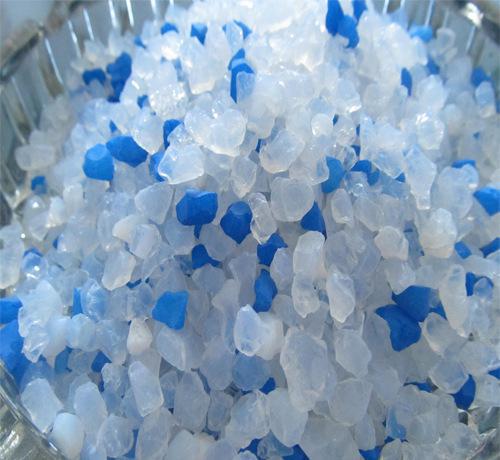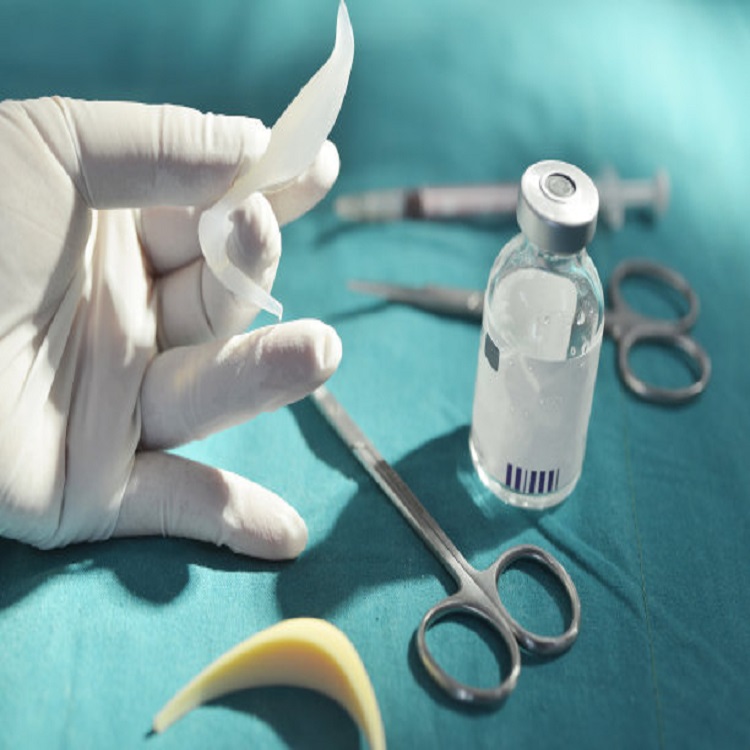Et differunt silicones mostindustrialpolymeroruminthat vincula, quae faciunt usque in backbones coniunctum corpora eorum non continet moleculosdoipsum, Thecharacteristic elementum of organicumRevolutionibus componit. This lack of ipsum in the polymer backbones makes polysiloxanes into unusual
“inorganic” polymerorum—though in most members of the class two organic groups,
usually vinyl(FR2)yl(FR3), Orphenyl (C6H5), Areattached unicuique SiliconAtom. Ageneral silicones usus sit (R2SiO)xUbi Rcan esse aliqua organicum unus ex variis coetibus.
Frequentissima siliconecompositis, poly-diylsiloxane,
can illustrate the central characteristics of the class. The starting material
is metallic silicon, which is obtained from silica sand. Silicon is reacted
with yl chloride(FR3Cl) overaaeris sedibus, forming
diyldichlorosilane ([CH3]2Si [Cl]2). By
reacting this compositis with water, the CHLORUM Atoms
are replaced by hydroxyl (OH) groups. The resultant unstable compositis, silanol
([CH3]2Si [IL]2), Apud polymerizescondensationreaction, the single-unit moleculos linking
together to form poly-diylsiloxane with concomitant loss of water. The
diylsiloxane repeating unit of the polymer has the following structure:
Siloxane moleculos rotate freely around the Si-O bond, so,
even with vinyl, yl, or phenyl groups attached to the silicon Atoms, the moleculoishighly flexibile. Praeterea, in Si-o vinculum abhorret a calorem repugnant et notreadily adorti aut oxygeniozone. As a
result, silicones are remarkably stable, and they have the lowest
glass-transition temperature (the temperature below which the moleculos are
locked in a rigid, glassy state) and the highest permeabilitytogases de aliquo polymer. In alia manu, in Si-o vinculum recipit tohydrolysis impetu et per acida et vasis, et siliconeplasticsetfricatoresinfirmorum facile augeri arerelativelyhydroipsumolea.

Historia
Siloxanes were first characterized as
polymerorum by the English chemist Marcus Stanley Kippingquod in partibus 1927.Because Kipping repetendum est quod unitas wasessentiallyketone (the
polymer chains formed by silicon Atoms, with oxygen Atoms attached by double
bonds), he incorrectly called them silicones, a name that has persisted. In
1940 American chemist Eugene George Rochow at the Electric Lorem Generalis laboratories
in Schenectady, N.Y., U.S., prepared yl siloxanes by the process that
remains the basis of modern polymerization methods. Meanwhile, researchers at
Corning Glass were exploring the production of silicones, and in 1943 Corning
and the Tabulae anatomicae ChemicaltheDow advéntum Corporation formatae ad producendum silicone products.

 English
English  русский
русский  Français
Français  Esperanto
Esperanto  Afrikaans
Afrikaans  Català
Català  שפה עברית
שפה עברית  Cymraeg
Cymraeg  Galego
Galego  Latviešu
Latviešu  icelandic
icelandic  ייִדיש
ייִדיש  беларускі
беларускі  Hrvatski
Hrvatski  Kreyòl ayisyen
Kreyòl ayisyen  Shqiptar
Shqiptar  Malti
Malti  lugha ya Kiswahili
lugha ya Kiswahili  አማርኛ
አማርኛ  Bosanski
Bosanski  Frysk
Frysk  ភាសាខ្មែរ
ភាសាខ្មែរ  ქართული
ქართული  ગુજરાતી
ગુજરાતી  Hausa
Hausa  Кыргыз тили
Кыргыз тили  ಕನ್ನಡ
ಕನ್ನಡ  Corsa
Corsa  Kurdî
Kurdî  Lëtzebuergesch
Lëtzebuergesch  Malagasy
Malagasy  മലയാളം
മലയാളം  Maori
Maori  Монгол хэл
Монгол хэл  Hmong
Hmong  IsiXhosa
IsiXhosa  Zulu
Zulu  Punjabi
Punjabi  پښتو
پښتو  Chichewa
Chichewa  Samoa
Samoa  Sesotho
Sesotho  සිංහල
සිංහල  Gàidhlig
Gàidhlig  Cebuano
Cebuano  Somali
Somali  Тоҷикӣ
Тоҷикӣ  O'zbek
O'zbek  Hawaiian
Hawaiian  سنڌي
سنڌي  Shinra
Shinra  Հայերեն
Հայերեն  Igbo
Igbo  Sundanese
Sundanese  Yoruba
Yoruba  Español
Español  Português
Português  日本語
日本語  Deutsch
Deutsch  tiếng Việt
tiếng Việt  Italiano
Italiano  Nederlands
Nederlands  ภาษาไทย
ภาษาไทย  Polski
Polski  한국어
한국어  Svenska
Svenska  magyar
magyar  Malay
Malay  বাংলা ভাষার
বাংলা ভাষার  Dansk
Dansk  Suomi
Suomi  हिन्दी
हिन्दी  Pilipino
Pilipino  Türkçe
Türkçe  Gaeilge
Gaeilge  العربية
العربية  Indonesia
Indonesia  Norsk
Norsk  تمل
تمل  český
český  ελληνικά
ελληνικά  український
український  Javanese
Javanese  فارسی
فارسی  தமிழ்
தமிழ்  తెలుగు
తెలుగు  नेपाली
नेपाली  Burmese
Burmese  български
български  ລາວ
ລາວ  Latine
Latine  Қазақша
Қазақша  Euskal
Euskal  Az?rbaycan
Az?rbaycan  Slovensky jazyk
Slovensky jazyk  Македонски
Македонски  Lietuvos
Lietuvos  Eesti Keel
Eesti Keel  Română
Română  Slovenski
Slovenski  मराठी
मराठी  Srpski језик
Srpski језик 


